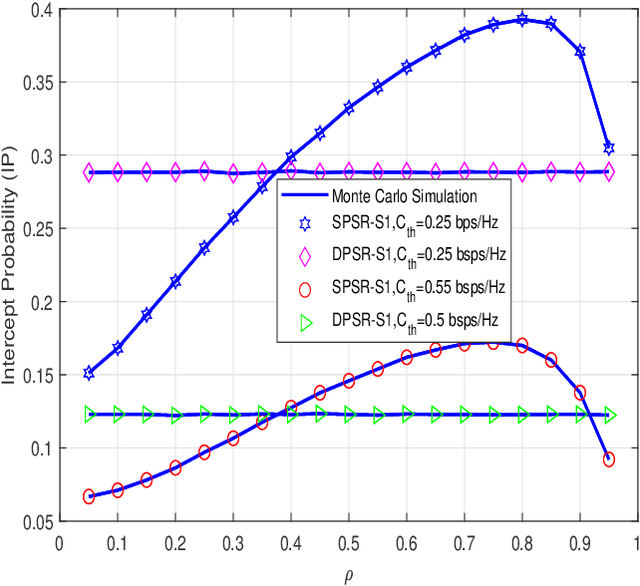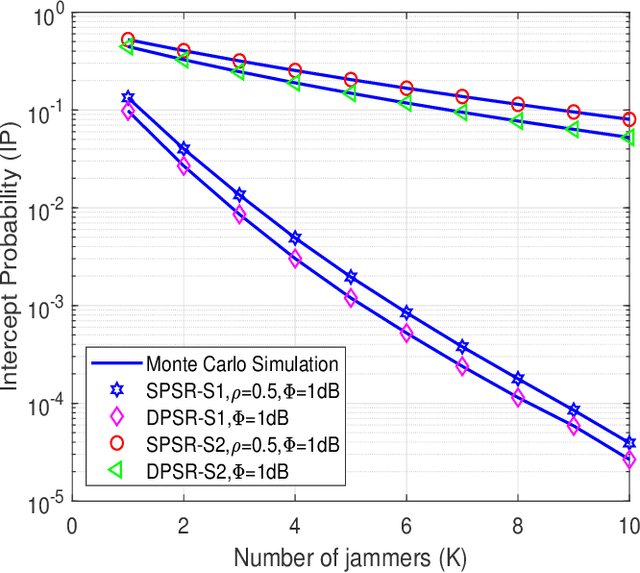Security-Reliability Trade-Off Analysis for SWIPT- and AF-Based IoT Networks with Friendly Jammers
Paper and Code
Jun 09, 2022



Radio-frequency (RF) energy harvesting (EH) in wireless relaying networks has attracted considerable recent interest, especially for supplying energy to relay nodes in Internet-of-Things (IoT) systems to assist the information exchange between a source and a destination. Moreover, limited hardware, computational resources, and energy availability of IoT devices have raised various security challenges. To this end, physical layer security (PLS) has been proposed as an effective alternative to cryptographic methods for providing information security. In this study, we propose a PLS approach for simultaneous wireless information and power transfer (SWIPT)-based half-duplex (HD) amplify-and-forward (AF) relaying systems in the presence of an eavesdropper. Furthermore, we take into account both static power splitting relaying (SPSR) and dynamic power splitting relaying (DPSR) to thoroughly investigate the benefits of each one. To further enhance secure communication, we consider multiple friendly jammers to help prevent wiretapping attacks from the eavesdropper. More specifically, we provide a reliability and security analysis by deriving closed-form expressions of outage probability (OP) and intercept probability (IP), respectively, for both the SPSR and DPSR schemes. Then, simulations are also performed to validate our analysis and the effectiveness of the proposed schemes. Specifically, numerical results illustrate the non-trivial trade-off between reliability and security of the proposed system. In addition, we conclude from the simulation results that the proposed DPSR scheme outperforms the SPSR-based scheme in terms of OP and IP under the influences of different parameters on system performance.
 Add to Chrome
Add to Chrome Add to Firefox
Add to Firefox Add to Edge
Add to Edge